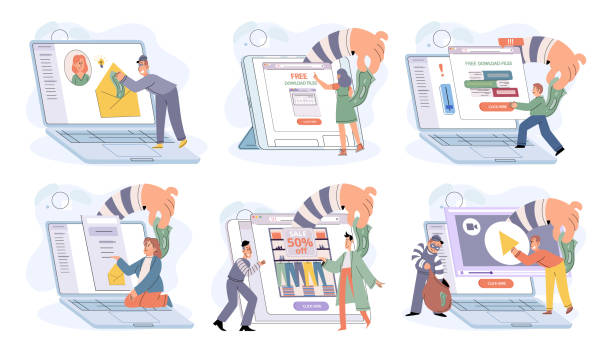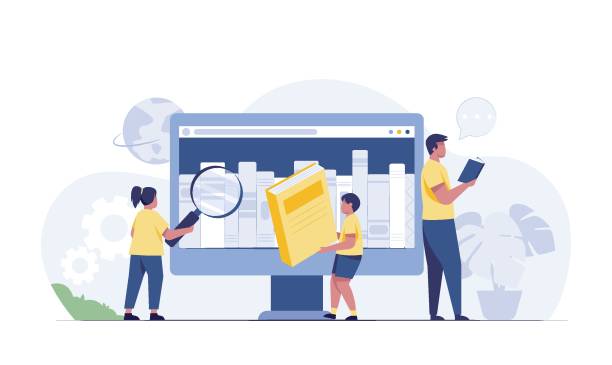The Importance of Entering Global Markets with Multilingual Website Design
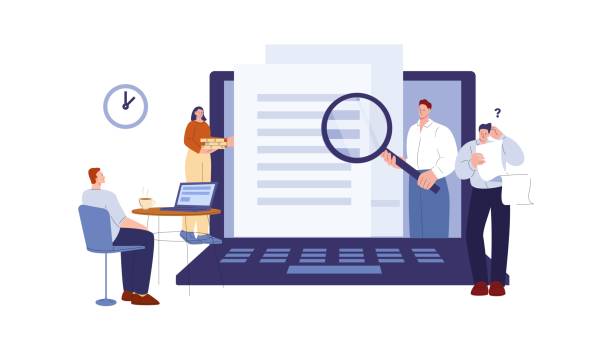
In today’s world where geographical borders have faded, #business_expansion beyond national borders is no longer an option, but a necessity.
#E-commerce and easy access to the internet have provided countless opportunities for companies to offer their products and services to customers worldwide.
In this regard, multilingual website design plays a pivotal role.
A website accessible in only one language automatically overlooks a huge portion of the global market potential.
This not only leads to the loss of potential customers but also limits a brand’s international image.
By providing website content in users’ native languages, a deeper connection can be established with them, and their trust can be gained.
This section offers a comprehensive explanation of the “why” and vital importance of this approach in the current era, and analytically addresses lost opportunities and gained advantages.
Many businesses are still unaware of the huge potential for attracting international customers with their international website.
Creating a communication platform that can interact with audiences from different cultures and languages is the cornerstone of success in the global economy.
This process goes beyond merely translating words; it involves understanding cultural differences and localizing content to create an optimal user experience.
Ultimately, multilingual website design helps you literally go global.
Tired of losing business opportunities due to not having a professional corporate website? Worry no more! With RasaWeb’s corporate website design services:
✅ Your brand’s credibility and professionalism will increase.
✅ You will attract more customers and sales leads.
⚡ Get a free consultation now to get started!
Competitive Advantages and Growth Opportunities with a Multilingual Website
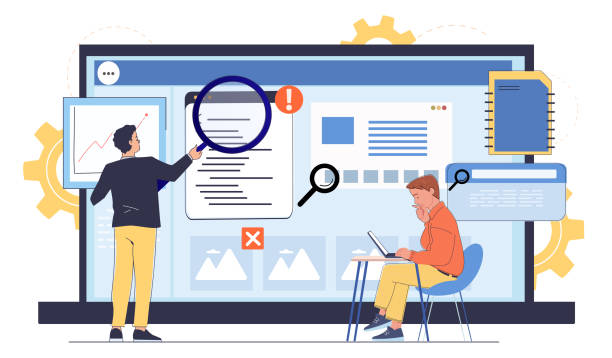
Having a multilingual website is more than just a feature; it’s a strategic investment that brings significant competitive advantages.
The first advantage is expanding market reach.
With multilingual website design, businesses can access customers who were previously unreachable due to language barriers.
This leads to increased traffic, more leads, and ultimately, higher sales.
Secondly, strengthening brand credibility and trust internationally is possible through this approach.
When a company takes the effort to provide content in the customer’s native language, it sends a powerful message of respect and attention, which in turn increases customer loyalty.
This section provides a deep analytical and explanatory view of how to leverage these benefits.
Additionally, improving SEO and ranking in local search engines is another key strength.
Search engines give higher rankings to multilingual websites for language-specific searches, which means more visibility and higher organic traffic.
For instance, an international website can appear prominently in German search results for German users and in Spanish search results for Spanish users.
This approach, in the long run, leads to increased market share and establishes a business’s position as a global player.
Technical Challenges and Solutions in Implementing a Multilingual Website
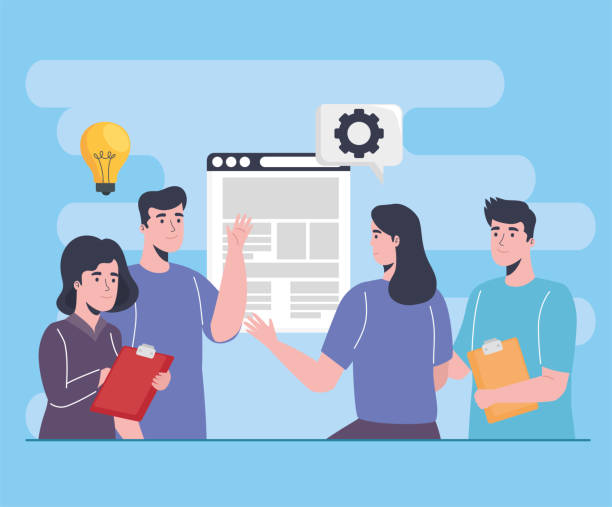
Implementing a multilingual website design comes with numerous technical challenges that require careful planning and specialized knowledge.
One of the most important challenges is URL structure.
Should subdomains (e.g., `es.example.com`), subdirectories (e.g., `example.com/es/`), or URL parameters (e.g., `example.com?lang=es`) be used? Each has its own advantages and disadvantages that must be carefully considered.
The best guidance is often to use subdirectories or subdomains, which are more favorable for SEO.
Another challenge is the Content Management System (CMS) used.
Does the chosen CMS have the ability to easily manage multilingual content? Many platforms like WordPress provide this capability with multilingual plugins like WPML or Polylang, but some custom CMSs require more development.
Managing translation strings, storing multilingual data, and server settings for language detection are also important technical considerations.
This section provides a comprehensive tutorial and specialized guide on these challenges and practical solutions to overcome them.
Multilingual website design means paying attention to technical details that can significantly impact user experience and SEO ranking.
| Structure | Example | Advantages | Disadvantages |
|---|---|---|---|
| Subdirectories | example.com/en/page |
Easy SEO management, cost-effective, unified hosting | No clear geographical separation from the server’s perspective |
| Subdomains | en.example.com |
Strong geographical separation, more flexibility in hosting | More complexity in setup and SEO management |
| Top-level Domains (TLDs) | example.fr |
Best option for local SEO, high trust | Expensive and complex, requires purchasing and managing multiple domains |
| URL Parameters | example.com?lang=en |
Simplest setup | Worst option for SEO, may be ignored by bots |
Content Strategy and Localization Beyond Translation

When it comes to multilingual website design, many only think about text translation.
But localization goes beyond merely converting words from one language to another.
Localization involves adapting content to the culture, values, and expectations of the target audience in each region.
This process offers a comprehensive guide to ensure that your message is not only understandable but also resonates with audiences on a deeper level.
For instance, colloquialisms, idioms, and even colors and images may have different meanings in various cultures.
A specialized and precise content should be culturally appropriate to prevent misunderstandings and maintain brand credibility.
This section also addresses the importance of keyword research for each language, as keywords effective in one language may not be relevant or have different meanings in another.
Is your content thought-provoking and curiosity-inducing, or merely a dry translation? Using machine translators might reduce costs, but it can never replace a skilled localization translator who is proficient not only in the language but also in the culture and target market.
This approach ensures that every version of your multilingual website is as engaging and effective as the original, providing an entertaining and useful experience for users.
Did you know 94% of first impressions of a company are related to its website design?
RasaWeb, by offering professional corporate website design services, helps you create the best first impression.
✅ Create a professional and trustworthy image for your brand
✅ Attract potential customers more easily and improve online presence
⚡ Get a free consultation for corporate website design!
Multilingual SEO and Search Engine Optimization

For your multilingual website design to be successful, merely translating content is not enough; it must also be optimized for search engines.
Multilingual SEO is a specialized field that helps ensure the visibility of different versions of your website in relevant search results.
The most important tool in this regard is the use of Hreflang tags.
These tags inform search engines like Google that different versions of a page exist for various languages or regions, thereby preventing duplicate content issues.
This section provides a practical tutorial and guide for correctly implementing Hreflang and other multilingual SEO techniques.
Furthermore, local keyword research for each language is crucial.
Keywords used in one language may not have a direct translation or may have different search volumes in other markets.
Internal and external link building must also be performed considering the multilingual structure to properly transfer page authority.
Search engines aim to provide the best user experience, so your multilingual website must be technically sound and content-localized.
This is an analytical and continuous process that requires constant monitoring and optimization to bring the best results for your international website.
Suitable Tools and Platforms for Multilingual Website Management

Choosing the right tools and platforms for multilingual website design can make a huge difference in the success of your project.
Fortunately, a variety of options are available today, each with its own features and benefits.
This section provides a comprehensive guide to selecting the best tools and platforms.
For Content Management Systems (CMS), WordPress with plugins like WPML (WordPress Multilingual Plugin) or Polylang is one of the most popular and flexible options.
These plugins enable the translation of posts, pages, categories, and even theme elements, and support Hreflang tags.
For e-commerce platforms, Shopify and Magento also offer multilingual solutions either built-in or through extensions.
Additionally, some more specialized platforms like Drupal and Joomla also have powerful multilingual capabilities.
Beyond CMS, Translation Management Systems (TMS) such as Smartling or Transifex can be very useful in managing large volumes of content and collaborating with translators.
These tools provide features like translation workflow management, Translation Memory, and glossaries, which increase translation speed and quality.
The choice of the right tool depends on the project’s complexity, budget, and your specialized needs.
By choosing these tools correctly, creating a multilingual website will be much more efficient and effective.
User Experience (UX) and User Interface (UI) in Multilingual Websites

Multilingual website design is not limited to content translation; User Experience (UX) and User Interface (UI) also play a vital role in its success.
Users should be able to easily and quickly find and select their desired language.
Placing a clear and accessible language switcher, usually in the website’s header or footer, is an essential guideline.
This switcher should be displayed with country flags (if necessary) or language codes (e.g., EN, ES, FR).
Additionally, the design should support Right-to-Left (RTL) for languages like Persian or Arabic and Left-to-Right (LTR) for other languages.
This affects text direction, element layout, and even the display order of icons.
Font size and type should also be appropriate for each language, as some languages require specific fonts for proper readability.
This section provides a deep specialized and educational insight into the principles of UX/UI design for multilingual sites.
It must be ensured that forms, buttons, and error messages are also correctly translated and localized so that the user does not feel confused at any stage.
The main goal of building a multilingual website is to provide a smooth and flawless experience for users in every language and culture.
By paying attention to these details, you can ensure that your website is not only functional but truly user-friendly and attracts your international audience.
| UX Element | Description and Tips |
|---|---|
| Language Switcher | Visible and accessible (header/footer), use language names (not flags) |
| Text Direction (RTL/LTR) | Full support for Right-to-Left languages (like Persian, Arabic) |
| Font and Typography | Choose readable and suitable fonts for each language and script |
| Date and Time Formats | Localize dates, times, currencies, and units of measurement |
| Images and Icons | Culturally appropriate for each region, avoid images with embedded text |
Continuous Maintenance and Updates of a Multilingual Website

After multilingual website design, the work is not over.
Continuous maintenance and updates are crucial to ensure proper functionality and provide up-to-date information.
This process offers an explanatory and educational guide on how to long-term manage your multilingual website.
Content updates in each language must be synchronized to avoid any inconsistencies in information.
This includes blog articles, product descriptions, service pages, and any news content or analytical information.
Furthermore, monitoring website performance in each language, including loading speed and responsiveness, is very important.
Technical issues in one language version can harm the overall user experience.
On the other hand, with technological advancements and changes in search engine algorithms, multilingual SEO optimization must also be reviewed and updated periodically.
This includes checking Hreflang tags, keywords, and backlinks.
Website security is also a constant concern; therefore, regular security updates and backups of all language versions are essential.
Having a specialized team or individual to manage these processes, especially for larger international websites, is recommended.
This continuous maintenance ensures that your investment in creating a multilingual website continues to yield desired results and always remains at peak performance.
Is your e-commerce site ready to attract maximum customers and increase sales? RasaWeb transforms your online business with modern and efficient e-commerce website designs.
✅ Increased speed and improved SEO
✅ Excellent user experience on mobile and desktop⚡ Get a free consultation for e-commerce website design from RasaWeb!
Case Study and Success Stories of Multilingual Website Design

Reviewing successful examples of multilingual website design can be inspiring and engaging, providing valuable insights into effective strategies.
This section, presented as a news-like and analytical overview of prominent websites, demonstrates how leading companies have utilized their multilingual website capabilities to achieve global success.
For instance, major tech companies like Microsoft or Amazon have complex multilingual websites that not only translate their content but also fully localize the user experience for each region.
They pay attention to details such as currency, date formats, and even product recommendations tailored to local tastes.
Travel websites like Booking.com are also prime examples, supporting over 40 languages and allowing users worldwide to easily book hotels and flights.
These successes are the result of a comprehensive approach to multilingual website design that pays special attention not only to technical aspects but also to content, SEO, and localization.
Studying these cases helps you gain a better understanding of best practices and avoid common mistakes.
These examples show how investing in building a multilingual website can lead to significant growth in international markets and strengthen brand image globally.
The Future of Multilingual Website Design and New Trends
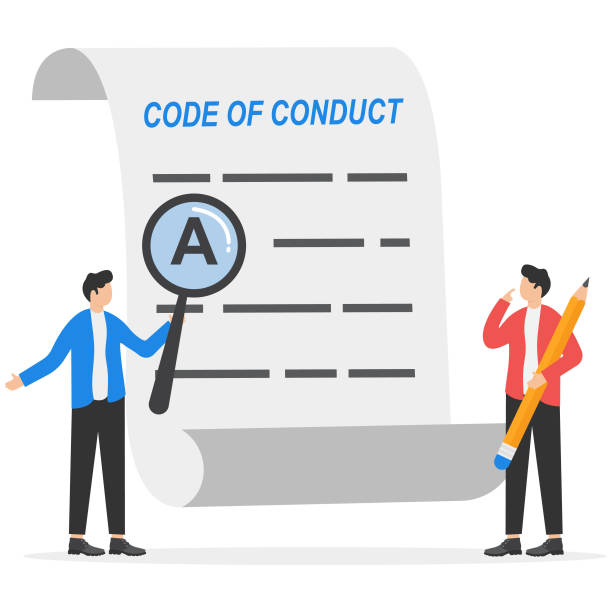
The future of multilingual website design is dynamic and full of innovation.
With significant advancements in artificial intelligence and machine learning, translation and localization processes are expected to become increasingly automated and accurate.
This section provides an analysis of future trends and thought-provoking content on how this field will evolve.
Neural Machine Translation (NMT) has significantly improved translation quality and is expected to provide near-human quality translations in the near future.
This can reduce costs and increase speed.
Furthermore, content personalization based on geographical location and user language, even before manual language selection, is another important trend.
Websites will be able to automatically suggest the appropriate language using IP data or browser settings.
Voice experience and voice-based interactions will also play an increasing role in international websites, highlighting the need for multilingual support for voice searches and virtual assistants.
Augmented Reality (AR) and Virtual Reality (VR) may also provide new platforms for delivering multilingual content.
All of this indicates an exciting outlook for building multilingual websites, allowing businesses to connect more effectively with their global audience and view multilingual website design as a key element in their digital strategies.
Frequently Asked Questions
| Question | Answer |
|---|---|
| What is multilingual website design? | It is the design of a website whose content is available to users in several different languages, allowing users to choose their preferred language. |
| Why is a multilingual website important? | To access international audiences, increase website traffic, improve user experience for non-Persian speaking visitors, and expand business in global markets. |
| What are the benefits of having a multilingual website? | Increased international SEO, attracting new customers from different countries, enhancing business credibility and professionalism, and reducing bounce rate by providing understandable content. |
| What are the methods for implementing a multilingual website? | Using subdirectories (e.g., example.com/en/), subdomains (e.g., en.example.com), or separate top-level domains for each language (e.g., example.com and example.de). |
| Which URL structure is best for international SEO? | Subdirectories (e.g., example.com/en/) are often preferred for SEO due to consolidating the main domain’s authority, although each method has its advantages and disadvantages. |
| How does a multilingual website affect SEO? | By providing content in different languages, the site appears in local search results for those languages, click-through rates and traffic increase, and the overall domain authority improves. Correct use of hreflang tags is crucial. |
| How is content translation managed? | Professional translators, machine translation tools (with human editing), or Content Management Systems (CMS) with built-in multilingual capabilities or relevant plugins can be used. |
| What are common challenges in multilingual website design? | Managing translated content, maintaining design consistency across different languages, compatibility with Right-to-Left (RTL) languages like Persian and Arabic, optimizing SEO for each language, and choosing the appropriate URL structure. |
| How do I manage text direction (LTR/RTL) on a multilingual site? | For Right-to-Left languages (like Persian), you need to apply specific CSS styles to change text direction, element layout, and table direction. This often involves using the `direction: rtl;` property and other related settings. |
| How can users change the website’s language? | Usually by using a button, dropdown menu, or language selector widget clearly placed in the site’s header or footer. Automatic detection of the user’s browser language and offering a language change is also common. |
And other services of RasaWeb Advertising Agency in the field of advertising
Smart Content Strategy: Professional optimization for campaign management using attractive UI design.
Smart Conversion Rate Optimization: A novel service for increasing sales through Google Ads management.
Smart Digital Advertising: A creative platform for improving click-through rates by intelligent data analysis.
Smart Marketing Automation: A combination of creativity and technology for customer acquisition by optimizing key pages.
Smart Direct Marketing: An effective tool for analyzing customer behavior with the help of intelligent data analysis.
And over hundreds of other services in the field of internet advertising, advertising consultation, and organizational solutions.
Internet Advertising | Advertising Strategy | Advertorial
Resources
Multilingual Website DesignMultilingual SEOInternational Business GuideGlobal Business Expansion
💡 For your business to shine in the digital world, RasaWeb Afarin is with you, offering comprehensive digital marketing solutions including custom website design, SEO optimization, and targeted advertising campaigns. With us, have a powerful and impactful online presence and pave your path to success.
📍 Tehran, Mirdamad Street, next to Bank Markazi, Southern Kazeroon Alley, Ramin Alley, No. 6



